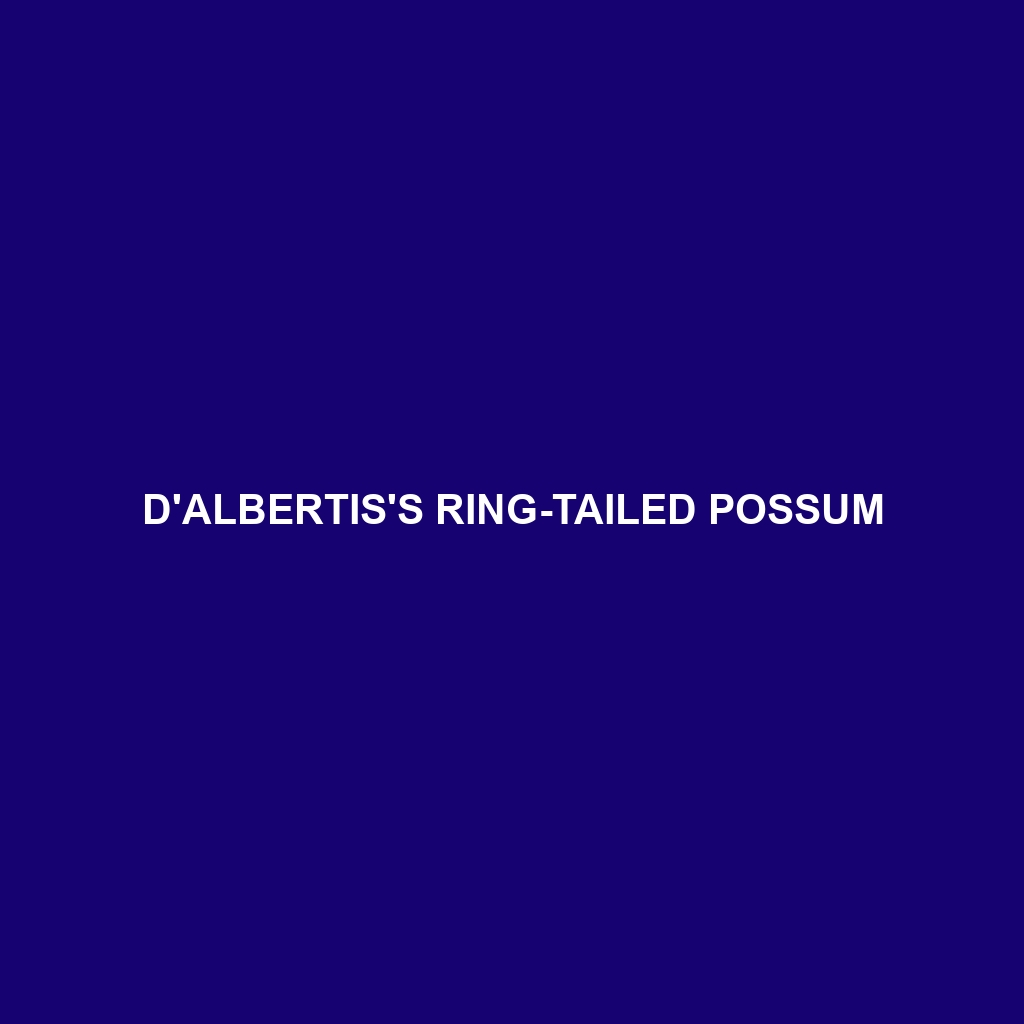Green Ring-tailed Possum (Pseudochirops archeri)
:
The Green Ring-tailed Possum is a unique and striking marsupial native to the tropical rainforests of northern Australia and Papua New Guinea. Known for its distinctive greenish fur, this arboreal animal is well-adapted to its forest canopy habitat. It plays a crucial role in the ecosystem, aiding in seed dispersal and maintaining forest health. Despite its fascinating characteristics, the Green Ring-tailed Possum faces several threats that put its population at risk.
Physical Characteristics:
Size: The Green Ring-tailed Possum generally measures about 30-35 cm in body length, with a tail roughly equal in length to its body. Adults typically weigh between 0.7 to 1.1 kg.
Coloration: Its most notable feature is its soft, greenish fur, which provides excellent camouflage among the foliage. The fur is generally a mix of olive-green, gray, and brown tones. The underside is lighter, often white or pale cream.
Special Features:
Tail: The possum has a prehensile tail, which is used for grasping branches and aiding in navigation through the canopy.
Eyes: Large, forward-facing eyes provide excellent night vision, an adaptation to its nocturnal lifestyle.
Ears: The ears are rounded and relatively small compared to its body size, aiding in minimizing heat loss.
Behaviors:
Social Interactions: Green Ring-tailed Possums are generally solitary but may be seen in pairs during the breeding season or when raising young. Communication primarily occurs through vocalizations and scent markings.
Feeding Habits: These possums are folivores, primarily feeding on leaves, flowers, and fruits. They have a specialized digestive system to break down tough plant material, including symbiotic bacteria in their gut that help digest cellulose.
Ecological Roles: As folivores, they play a significant role in controlling vegetation growth and dispersing seeds through their droppings, which helps maintain forest biodiversity.
Habitats:
Geographic Range: The Green Ring-tailed Possum is found in the rainforests of northeastern Queensland, Australia, and parts of Papua New Guinea.
Preferred Habitat: They thrive in dense, humid, tropical rainforests, usually at elevations between 300 to 1,200 meters. They are almost exclusively arboreal, rarely descending to the ground.
Adaptations:
Camouflage: Their greenish fur provides excellent camouflage against the foliage, protecting them from predators.
Nocturnality: Being nocturnal helps them avoid daytime predators and reduces competition for food with diurnal species.
Prehensile Tail: The tail is a crucial adaptation for an arboreal lifestyle, enabling them to grasp branches securely while foraging or moving.
Conservation Status:
Threats: The primary threats to the Green Ring-tailed Possum include habitat loss due to deforestation, climate change, and predation by introduced species such as feral cats.
Conservation Efforts: Conservation efforts focus on habitat protection, reforestation projects, and controlling invasive species. Protected areas within their range also provide sanctuary for these possums.
Fun Facts:
The Green Ring-tailed Possum is one of the few mammals with greenish fur, an adaptation that is relatively rare in the animal kingdom.
Their prehensile tail is not only used for climbing but also acts as a fifth limb, which provides remarkable dexterity and balance.
They have a slow metabolism, which is typical for folivores, as their diet of leaves requires extensive fermentation and processing to extract nutrients.
By understanding and appreciating the Green Ring-tailed Possum’s unique attributes, we can better appreciate the importance of preserving their natural habitats and ensuring their survival for future generations.
